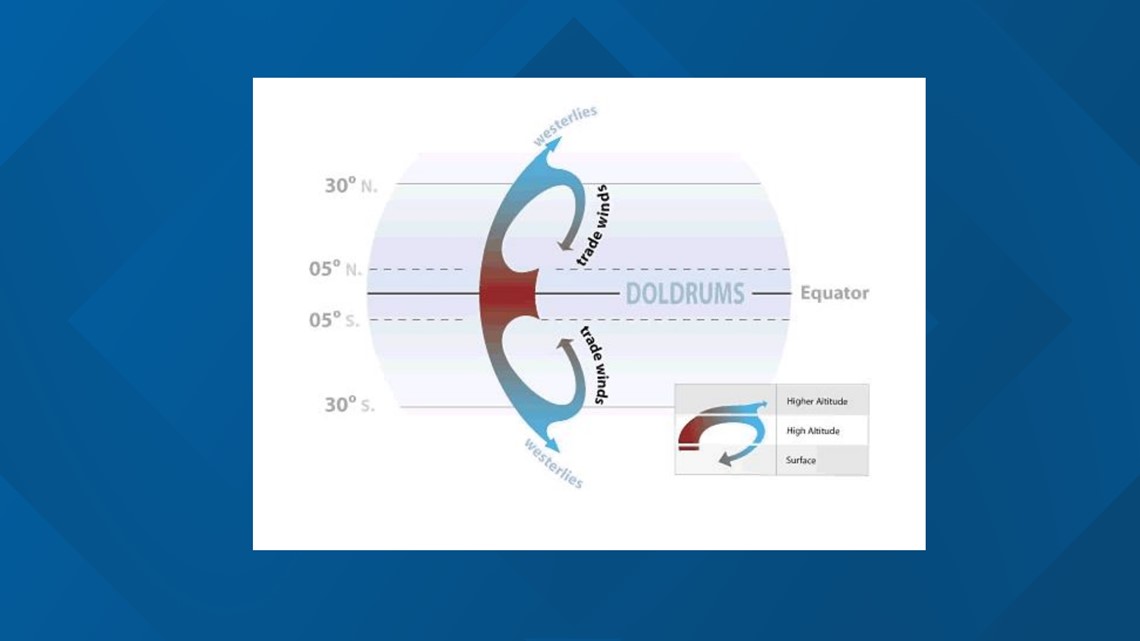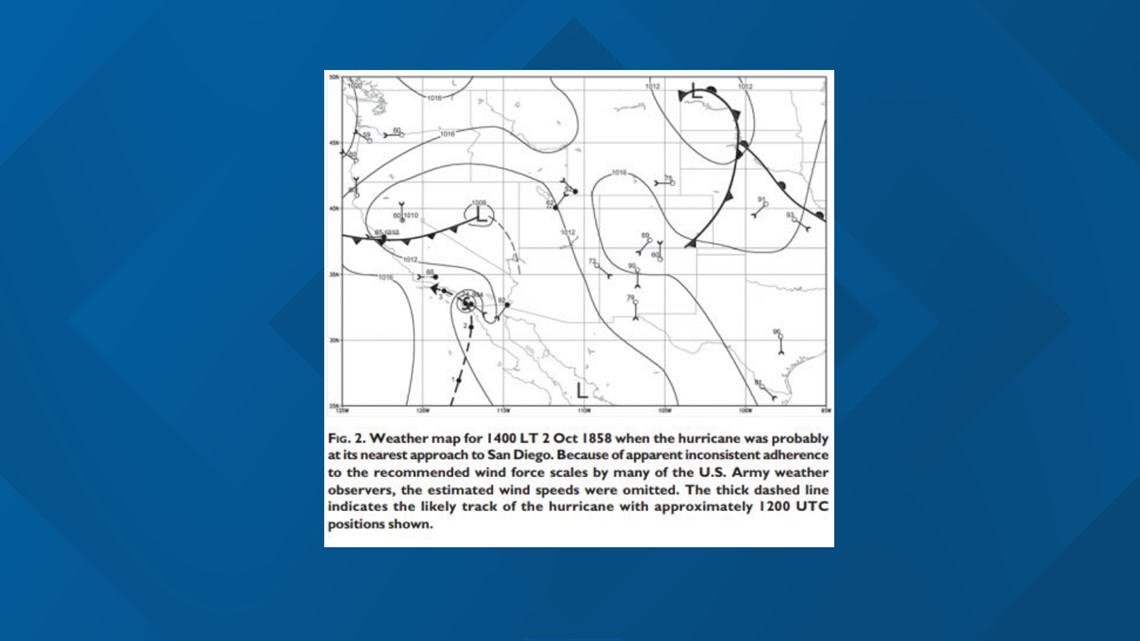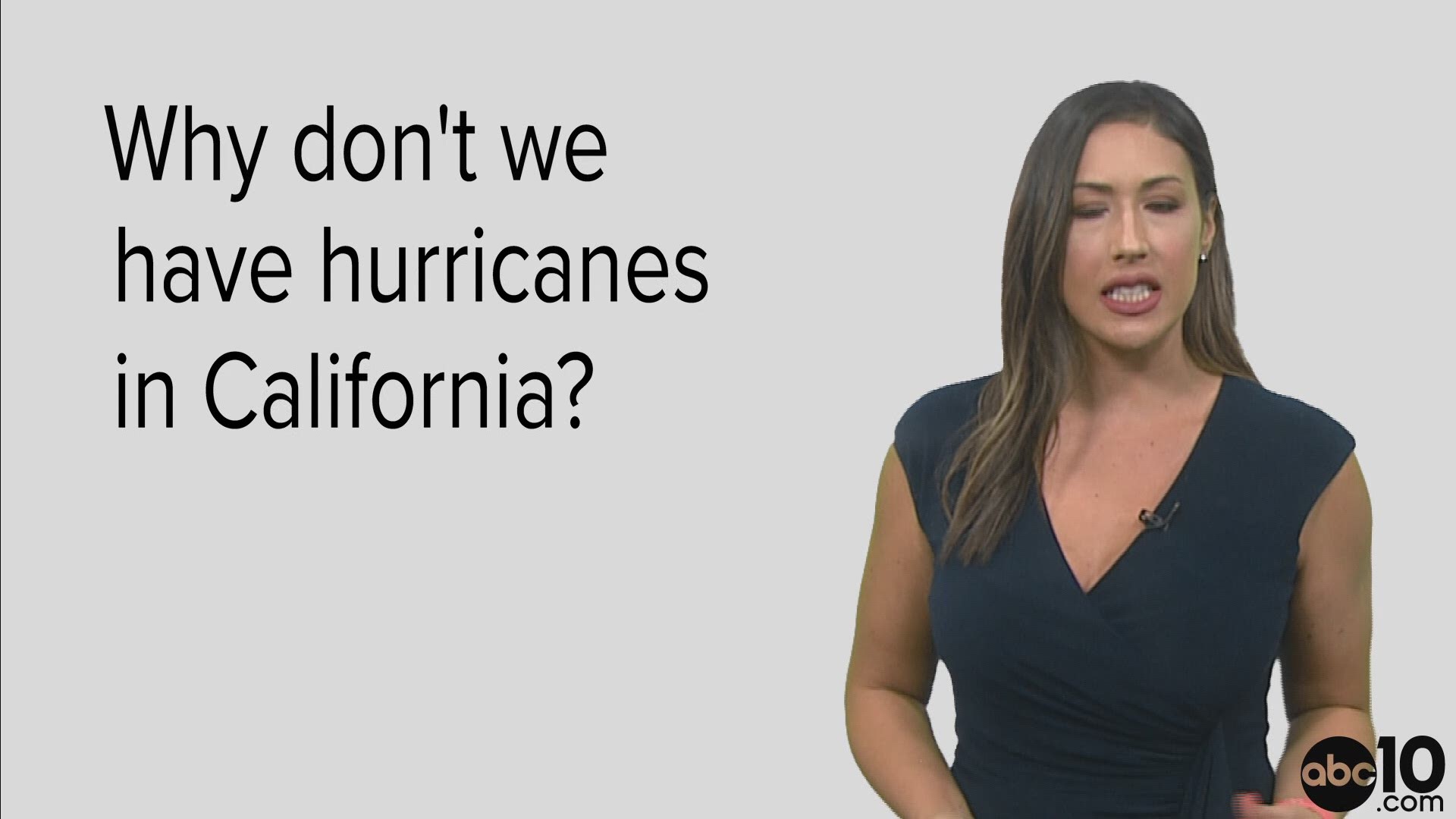SACRAMENTO COUNTY, Calif. — Year after year we see the coverage of major hurricanes in the Atlantic. The national hurricane center even sets its prediction on the number of hurricanes expected before the season begins. But rarely do we hear about major hurricanes in the eastern Pacific.
If you've ever wondered, "Why don't we have hurricanes off the west coast?" you're not alone. It's a valid question that's not often discussed.
There are many factors that need to play out in order for a hurricane to occur. In short, wind direction and cold water are the main reasons we don't see hurricanes in California.
As seen in the image below, the "trade winds" move from east to west between 5 and 30 degrees north latitude of the equator.
Any development of a hurricane off the coast of Mexico would have a movement toward the east or northeast…unless it’s monsoon season, which causes the reversal of winds. Then, we would see the hurricane moving over Mexico toward the desert southwest into Arizona.


Tropical storms and tropical storms that become hurricanes need warm water to form. The area of 15 degrees north latitude is prime real estate for storms over open water. We see this off the coast of Africa, where tropical storms develop over warm water and grow, as the system moves toward the west through the Atlantic.
That’s why the east coast of the US and many of the Caribbean Islands see hurricanes. Warm sea surface temperatures and the easterly winds make the Caribbean islands and Florida almost a target.
Although it's not completely impossible, a lot would have to occur for a tropical system off Mexico to move into California. First, it would have to be a very strong hurricane, like a CAT 4 or 5 moving at an incredibly slow speed where the trade winds wouldn’t help steer it to the west off into the Pacific. You would need a very weak high pressure system to allow the hurricane to head north, and then you would need incredibly warm waters in the Pacific. Or, you would need a storm to be able to accelerate incredibly fast to the north without losing intensity in the process.
A hurricane would start to break apart as it moves north into colder Pacific waters. Tropical storms need 80-degree temperatures for development. The warmer the water, the better chance the storm becomes a strong hurricane.
California lacks these warmer waters.
During the peak of hurricane season, mid-August to late October, the warmest waters off California are about 75 degrees on San Diego Beaches. Just offshore, where storms would need the room to develop, temperatures drop off to 65 degrees. A far cry from the 80 degrees needed to sustain a tropical development.
California’s average temperatures during hurricane season are between 60 to 72 degrees over open water.
This isn’t to say it’s not possible to see remnants of a tropical storm moving into California. There have even been recorded sea surface temperatures around 80 degrees around San Diego’s beaches, but it is exceedingly rare. The only actual hurricane to get close to California was the 1858 San Diego Hurricane. It’s still being debated over whether it really made landfall. On Oct. 2, 1858 the hurricane got close to San Diego but quickly shifted west.


The only known system to truly make landfall was the 1939 Long beach tropical storm. It was formerly a hurricane that formed off Central America and made a rare shift from a west movement to an eastern movement before making landfall on San Pedro.
Although not impossible, a hurricane hitting California would be extremely rare.

